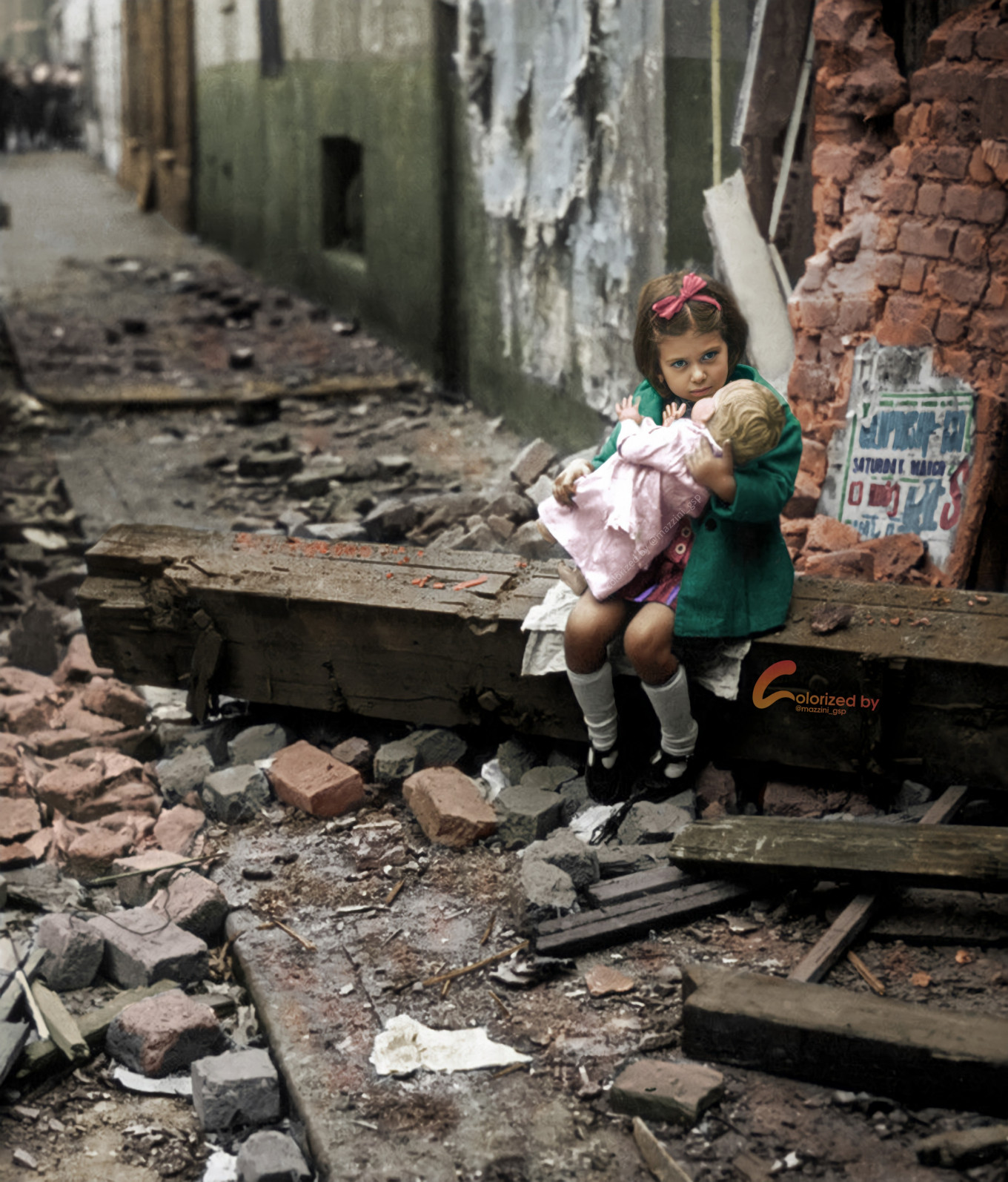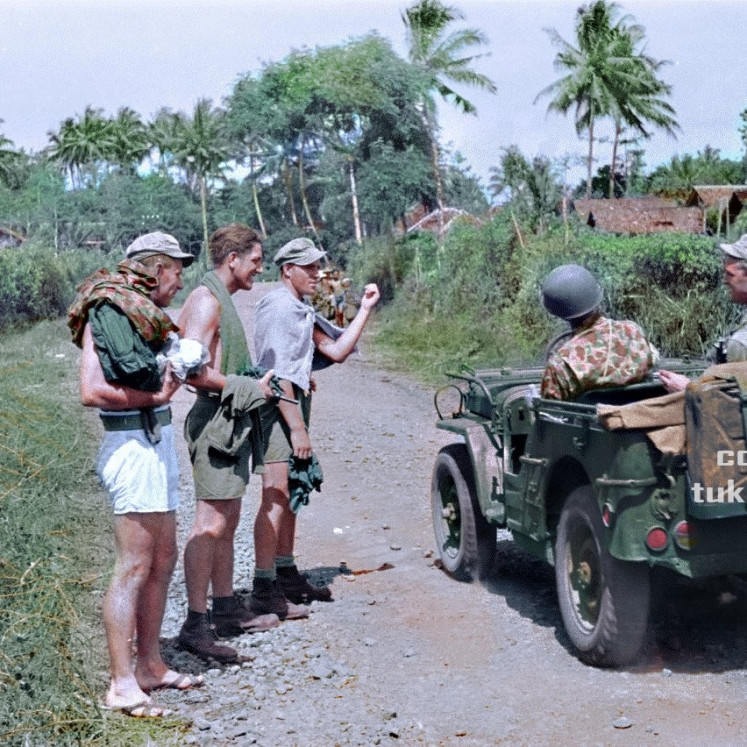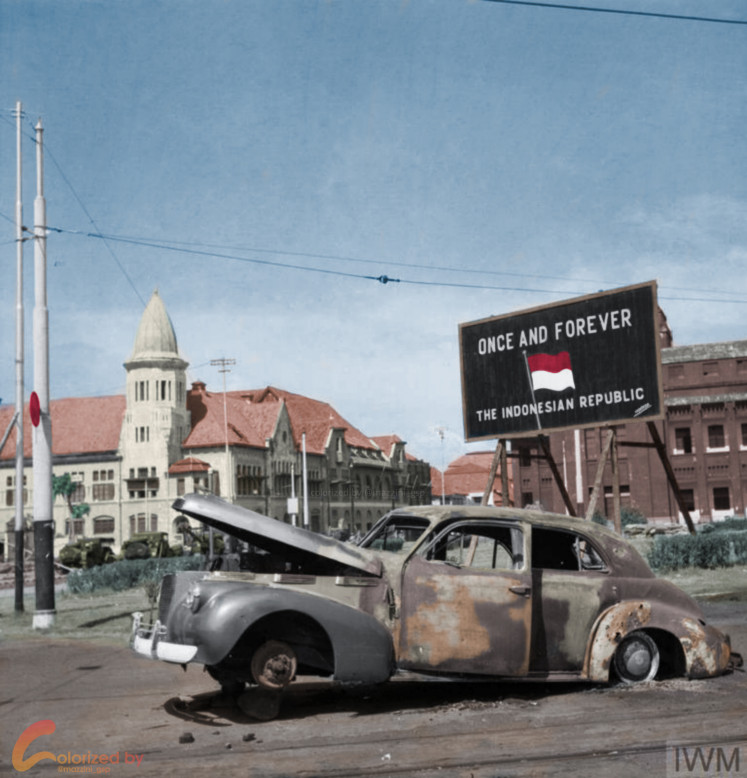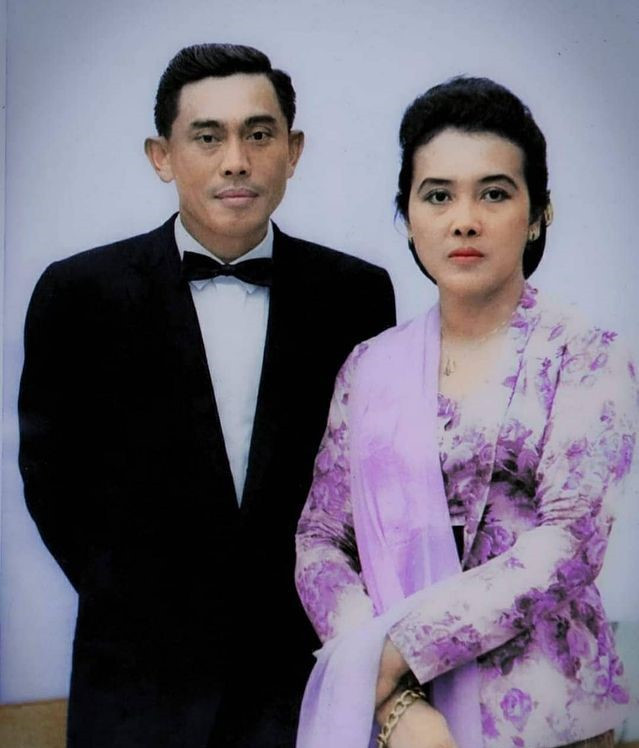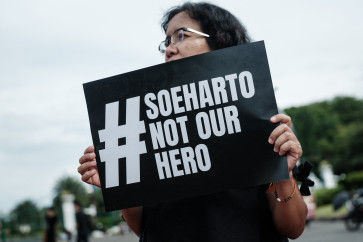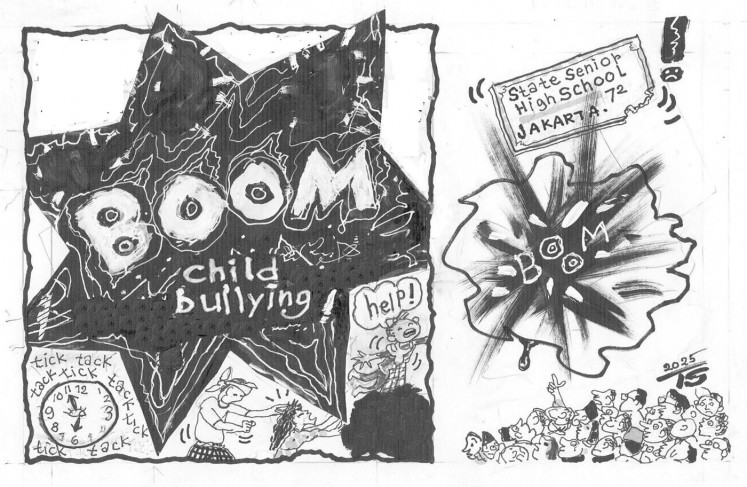Popular Reads
Top Results
Can't find what you're looking for?
View all search resultsPopular Reads
Top Results
Can't find what you're looking for?
View all search resultsPhoto colorization enthusiasts bring history to life
Change text size
Gift Premium Articles
to Anyone
Two colorization enthusiasts are restoring life to old pictures in a bid to get people talking about and learning from history.
In a bid to allow everyone to see the vibrancy of the past, enthusiasts of historical photographs are colorizing old black-and-white photos.
Among those colorizing old monochrome pictures is Sadam, who prefers to go by his online persona “Mazzini” and uses the @mazzini_gsp handle on Twitter and Instagram.
"I have been colorizing historical photos since early 2021. I first colorized an old photo to accompany my piece about history on Twitter. I ended up colorizing old photos until today because it turns out it’s addictive," he said.
While Mazzini might be new to the colorization scene, 40-year-old Bandung native Heru Iswanto is more seasoned. The police officer, who posts as @tukangpulas_asli on Instagram and as @tukangpulas on Twitter, has been offering viewers a way to travel back in time for a little over five years.
"Colorizing black-and-white photos has been my hobby since November 2016. I think this is a unique hobby, and the techniques for colorizing photos are not very well known," he said.
Heru added that his aim was so netizens could "get in touch with the past and learn more about history".
Best way to learn: Heru says people who wish to learn how to colorize old photos should invest in learning how to use photo software instead using applications that use instant filters. (Courtesy of Heru Ismanto) (Personal Collection/Courtesy of Heru Ismanto)Same aim, different tech
Mazzini and Heru use different software to add color to black-and-white photos.
"I colorize black-and-white photos using Photoshop,” said Heru, referring to the Adobe software that has withstood the test of time. “Mastering the basics of Photoshop is a must” for people who wanted to start colorizing old photos, he stressed.
While Heru prefers the “old school” method, Mazzini has found the software to be too unwieldy for him, so he prefers another photo editor that allows him more versatility.
"There are many methods and apps used to colorize old photos and every software is different,” Mazzini said.
“I prefer to use the app PicsArt because the features are simpler. We use a stylus, so it feels just like drawing on a piece of paper. With Photoshop, we’d need to use a mouse," he said.
Mazzini explained, however, that the process of colorizing old black-and-white photos was not as simple as picking up the stylus and adding color. Researching the photograph and understanding its historical context were a must.
"The picture must [have] a very high resolution so we can zoom in on it multiple times and add the colors in detail,” he said of the initial selection process.
“We have to then research the context behind the picture. For example, we have to match the colors of the clothes in the picture, the buildings and vehicles, among others, with the year the photo was originally shot," Mazzini explained.
"If I encounter a problem, I would approach a historian, or people with military knowledge for war photos and people with knowledge about old vehicles for pictures that portray streets and cities. Only after I understand the context behind the pictures can I start colorizing."
The beginning: Mazzini works in the media industry. He first colorized an old black and white photo for his Twitter post. (Courtesy of Mazzini) (Personal Collection/Courtesy of Mazzini)Photo colorization is neither Mazzini's nor Heru's primary source of income. While Heru makes his living as a police officer, Mazzini work in the media industry. However, they still earn a decent amount of money from their hobby. This is especially true for Heru, who offers his colorization service as a side business.
"Alhamdulillah [Praise be to God], I earn a little from this hobby. The price tag varies depending on the picture’s difficulty," Heru admitted.
Meanwhile, Mazzini makes an income from his hobby through donations, though he acknowledge that he would earn more if he offered photo colorization as a services.
"I do make some money from colorizing. It’s not much, because the money comes from donations on Trakteer,” he said, referring to a fan-supported platform for artists. “It’s just a hobby for me, after all. That being said, many [people] out there offer colorization services."
Positivity and pride
Both Mazzini and Heru upload their colorized photos to Instagram and Twitter.
"I post my work on Instagram, Twitter and sometimes Facebook. Alhamdulillah, the responses I have received have been positive," said Heru.
“I have received various responses to my work. For example, when I post a picture from the Indonesian War of Independence or world wars I and II, people usually respond by discussing the historical context of the picture, such as the battle or the war portrayed in the photo," Mazzini explained.
"If the photo portrays a condition in a city, it is usually people from that city who respond to the post, while also providing the current conditions [there]. If the picture portrays people, the comments are most likely to do with the clothes or the beautiful faces in the picture,” he added. “I happen to colorize pictures of European-Indonesian girls a lot. The pictures come from the Dutch East Indies era."
Creation: One of Heru's works is displayed at the Sasmitaloka Ahmad Yani Museum. He said it is his proudest work. (Courtesy of Heru Iswanto) (Personal Collection/Courtesy of Heru Ismanto)One of Heru's colorized photos shows national hero Gen. Ahmad Yani and his wife. He said he took the most pride in his work on this particular picture because it was on display “at the museum", referring to the namesake Sasmitaloka Ahmad Yani Museum in Central Jakarta.
Meanwhile, Mazzini was most proud of two photos he had colorized, one because of the effort he put in and the other for its historical context.
"I once spent days colorizing a picture. It depicts a little girl hugging her doll in the middle of ruins in London after the city was bombed by the German Luftwaffe during the Second World War in 1940," he explained.
The other photo is a picture of the LaSalle car that belonged to British officer Aubertin Walter Sothern Mallaby that was destroyed on Oct. 30, 1945, when it was bombed by Indonesian independence fighters during the Battle of Surabaya.
"The research for colorizing the picture also took some time. I had to go a long way before finding Ruslan Abdulgani's depiction of Mallaby's car. Based on his notes, the color of the car was gray."
Reiterating his intention in colorizing vintage black-and-white photos, he said, "I want to dispel the belief that history is boring".
According to Mazzini, this prevailing belief came from people having to spend time memorizing the years and names in history classes. "I hope to eliminate this perception," he stressed.
He hoped that by reviving old photos to their full-color glory, people could discuss history in a more relaxed way. "Therefore, there will be more people discussing history," he concluded.

